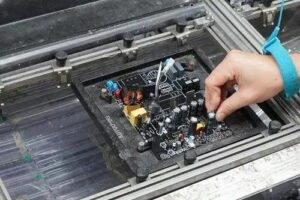In SMT surface mount processing, optimizing process parameters is very important, such as welding temperature and time, surface mount pressure and speed, substrate processing and cleaning process parameters need to be finely adjusted to ensure welding quality and improve production efficiency.

1、 Welding temperature and time
Temperature control: Welding temperature is a key factor affecting the welding quality of surface mount components, and excessively high or low temperatures can lead to poor welding. Therefore, it is necessary to set a reasonable welding temperature range based on different welding materials and substrate materials.
Time adjustment: The length of welding time is equally important. If the time is too long, it may cause damage to the components, while if the time is too short, the welding may not be firm. By precisely controlling the welding time, it is possible to improve production efficiency while ensuring welding quality.

2、 SMT pressure and speed
Pressure control: The pressure during surface mounting has a direct impact on the adhesion and welding quality of the components. Excessive pressure may damage components or substrates, while insufficient pressure may result in loose welding. Therefore, it is necessary to adjust the appropriate mounting pressure according to the characteristics of the components and substrates.
SMT speed: SMT speed is an important factor affecting production efficiency. While ensuring welding quality, increasing SMT speed can significantly improve production efficiency. But this requires precise mechanical control and optimized process parameter support.
3、 Substrate processing and cleaning
Substrate processing: The quality and cleanliness of the substrate have a significant impact on the quality of SMT surface mount processing. When processing substrates, it is necessary to ensure that their surface is flat and free of impurities, and appropriate pre-treatment should be carried out as needed.
Cleaning process: Optimizing the cleaning process to ensure thorough removal of impurities and contaminants before welding can significantly improve the reliability and stability of welding.














